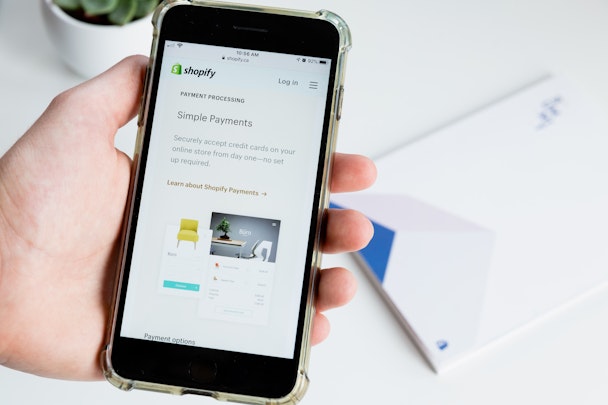Why WPP is pursuing partnerships with e-commerce platforms like Shopify
WPP has begun to invest more in its DTC and e-commerce capabilities. Its global CTO explains why the discipline is essential to its future.

WPP recently inked a partnership with Shopify / Unsplash
E-commerce is an increasingly valuable business for agency groups and an attractive area of focus for agencies looking to diversify their revenue streams in a challenging economic environment.
It’s not the kind of work that wins many Lions or draws the attention of career creatives, but facilitating sales is a fundamental part of marketing. David ‘sell or else’ Ogilvy would probably have approved.
Advertisement
That’s handy for WPP, the agency group behind the figurehead’s namesake agency, as well as Wunderman Thompson and VMLY&R. Last week, it inked a partnership deal with e-commerce platform Shopify as a means of bolstering its in-house expertise and the appeal of specialist agency Diff (which the group acquired in 2022).
“The macro context is that commerce has been a really important focus for us as part of our service offering for a number of years,” explains chief technology officer Stephan Pretorius. “We’ve been expanding our commerce service offerings steadily. It’s a huge and growing category for us.”
Across its agencies, the group estimates that it has over 13,000 employees working on e-commerce. Pretorius says that demand among clients has increased lately due to the bigger margins potentially available through direct-to-consumer sales channels and, in parallel, the chance to access more revenue through retail media networks that go hand in hand with them. Achieving that goal isn’t a simple task for brands that traditionally sold through vendors, though.
Advertisement
“People intuitively feel that DTC will be more profitable – it’s not necessarily. You have to put your own infrastructure in place or procure it for delivery, payments and marketing. There’s a lot to invest in, and under a certain volume, it’s actually cheaper to sell by marketplaces,” he says.
There’s also an experience gap between starting from zero with the correct tech and platforms in place and knowing what to do with them. In theory, this is where WPP fits in.
“There are things you learn about, for example, what makes content on Amazon successful that can be exported to making content successful on Walmart.com, that can be exported to a direct consumer Shopify site,” he says. “There’s layers of merchandising knowledge, content knowledge, that goes across different platforms.”
Shopify integrations are part of that investment mix. The platform has become a viable provider for the large-scale clients WPP agencies target.
“Historically, people perceive them as being kind of like a small business, self-service platform. But, some of the largest direct-to-consumer brand websites are running Shopify today. They’ve broken into the enterprise market significantly and done some very interesting things around, for instance, social integration. They’re now an important part of the omnichannel technology toolkit.”
The partnership will result in WPP training hundreds of staff across its networks to become experts in the platform, plus early access to future software features. Furthermore, Pretorius says that access to Shopify’s customer data helps its agencies hone their approach.
“That aggregated access to commerce data as an indicator of economic activity, and therefore an indicator of advertising opportunity, has become a really big part of how we work with Amazon, with Stripe, with Instacart [also WPP partners].”
Suggested newsletters for you
This article was amended on 16 October. It previously listed the number of WPP staff working on e-commerce as 30,000; the correct figure is 13,000.

